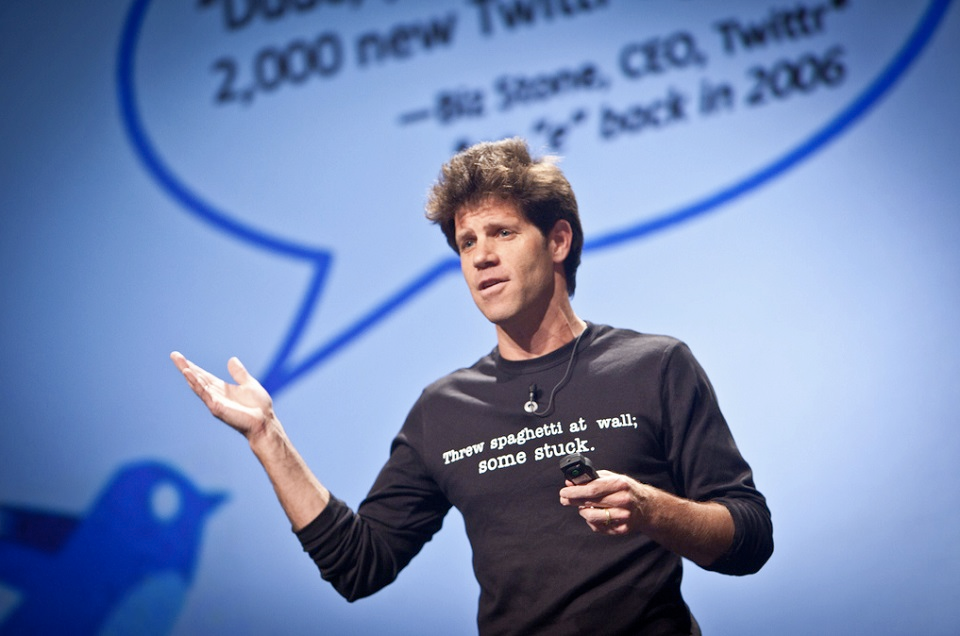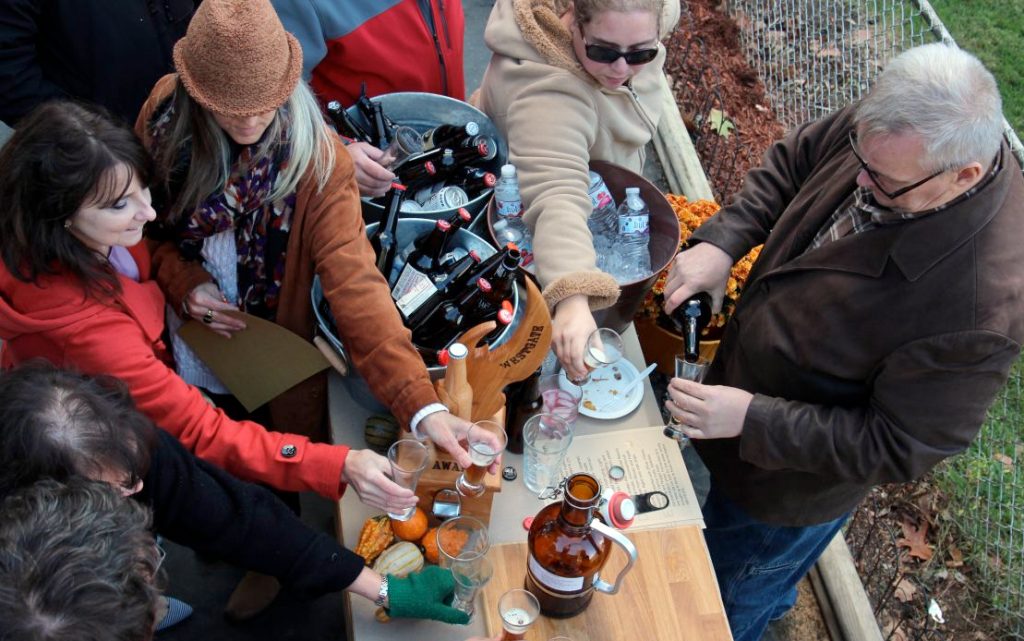Originally published in the Spring 2017 issue of Stock & Barrel

Pizza is probably our most prolific and pervasive ethnic fare. But “pizza pie” hasn’t always been as American as apple pie. It was originally dismissed as immigrant food — and before the 1950s, Columbus was one of the only cities between New York and Chicago you could even find it.
As waves of immigrants from Italy settled along the East Coast and in close enclaves across the country, they weren’t always welcome. In Columbus, one of those neighborhoods was Flytown, so nicknamed because the new homes there seemed to “fly up overnight”. A mostly Irish community, by the early 20th century, immigrants from Italy and elsewhere in Europe also called it home. African Americans fleeing the south settled there as well.
That’s where Columbus pizza history had its undisputed origin, at the oldest Italian restaurant in town, TAT Ristorante Di Famiglia — named as a nod to the new Transcontinental Air Transport, which also opened for business in 1929. Promising travel from New York to Los Angeles in 48 hours through a network of planes and trains, Columbus was the starting point for all flights west. First served off the menu, then officially added in 1934, TAT served pizza in the Flytown neighborhood — ultimately relocating to 1210 S James Road in 1980, where it is still owned by the Corrova family.
But those early pizzas bore little resemblance to the modern pizza most know, more like a focaccia that sometimes lacked cheese during the depression or due to war rationing. Flytown suffered during those decades, eventually declared blighted by the Columbus Redevelopment Authority and leveled just as the city’s pizza scene was starting to emerge.
That’s also when bragging rights for the oldest pizza place in Columbus become a bit more murky, and where old menus and old memories don’t always agree.
By the late 1940s, returning GIs in Italy weary of rations had their first taste of “pizza” and were looking for it in the Italian neighborhoods and restaurants many once shunned. That’s also about the time Jim and Dan Massucci and Romeo Siri started serving what most of us would recognize as pizza at their restaurant in Grandview. The Massucci brothers opened Massey’s Pizza in late 1949 at 4464 E Main Street — where it remains today after more than a few renovations and updates.
“It’s been added on several times, but it’s still the original building,” explained Dave Pollone, who along with his brother Jed acquired Massey’s Pizza in 2000. “Jim and Dan Massey started it, but Guido Casa bought them out in 1962. My grandmother was Guido’s aunt, so we’re cousins.”
“Our dad used to get us pizza from Romeo (Siri), but it didn’t have cheese under the pepperoni. It was just dough, sauce, and pepperoni with a little parmesan sprinkled on top,” he recalled. “The first time I had pizza with cheese under it was from Johnny Remeli, when he used to make pizza in the back of a place called the Musical Bar on Parsons Avenue.”
Though the Massucci brothers are known as the founders of Massey’s, the Pollone brothers have stayed true to Guido Casa by refusing to follow the industry trend toward faster-cooking, conveyor ovens.
“You can’t make a pizza in a conveyor oven, it just doesn’t cook the bottom right. That’s why all of these old pizza places still use deck ovens,” Pollone explained. “The oven in Whitehall is the original rotating-deck oven from 1949. It’s like a Ferris wheel in there.”
Though Massey’s remains ubiquitous in Central Ohio, they weren’t the only ones pushing modern pizza into the mainstream. The Angeletti family still owns Ange’s Pizza, opened in late 1951 before moving to their oldest location at 139 S Yearling Road early the following year. Tommy’s Pizza still has two locations on Lane Avenue opened in the 1960s (and one in Dublin), but Iacono’s original place near E 5th Avenue and Cassidy Avenue opened in 1952. (In fact, Tommy’s only added “pizza” to the name of the restaurant after demand for the novel dish outpaced the rest of the menu.)
Gatto’s Pizza at 2928 N High Street was Clintonville’s first, also opened in 1952 by brothers Jim and Joe Gatto. Johnny’s Pizza on Parsons Avenue opened in 1953. Rubino’s brought pizza to Bexley in 1954, and likewise endures with a faithful following at 2643 E Main Street. And the original Josie’s in Franklinton at 952 W Broad Street has been around since 1959, with extended family operating the Hilltop location in Westgate. Johnny Remeli wasn’t the only Columbus pizza pioneer making pies in back. A young Jim Grote famously started selling pizza out of the storeroom of the hardware store across the street from 1000 Thurman Avenue where the original Donatos still stands.
“Every Friday night, my dad brought a pizza home for dinner,” recalled Donice Foraker, who recently retired as director of special projects and “on-site historian” for Donatos after more than five decades. He scarcely recalls a time when Columbus wasn’t a pizza town.
“My older brother worked for Donatos too. He started doing deliveries while I was still washing pans,” he explained. “That was 1966 and we were kids, but by 1978, I was running the store. After a couple of years, Grote asked me to come work with him — to tell him what was right and what needed to change as the company grew.”
“All of the pizza places on the south end had a good reputation,” Foraker noted. “We were competitors, but we all knew and respected each other. For those of us who are still around, it’s still that way.”
It’s a shame we don’t celebrate legacy and longevity the way we do new and shiny. The 1950s was a transformational decade — from fenders to fashion, hairstyles to hemlines. Americans are historically fickle, and Columbus is no exception. But these early ethnic eateries endured, doing their part to spread pizza’s popularity throughout the Midwest, long after the Lustrons lost their luster.
Though each neighborhood could claim which pizza place is the oldest in their particular part of town, deciding which is the oldest in Columbus isn’t as easy as it seems. There are competing claims, but also some shared credit to go around. All of these places survived despite economic declines that saw competitors and imitators come and go. They also held their ground against big budget, corporate carpetbaggers muscling into their territory. And they fearlessly defended thin crusts and square-cuts from their detractors — because a pointy, triangular slice with a chunk of crust at the end as a bland handle violates the implicit social compact of pizza, with varying slices just right for any age or appetite. But, if “oldest” really means “original”, the answer becomes more certain.
There is only one pizza place in the running that’s still in their original space, run by the original family, using their original recipe: Gatto’s Pizza.
“Vince and Joe Jr. started working here in high school on the weekends. It was a family business,” explained Bill Fulcher, the youngest of the three cousins who carry on Gatto’s pizza heritage. “I started when I was a sophomore, so I’ve been here 45 years.”
Fulcher went on to Ohio State and still works for the Ohio Attorney General’s Office, but also wanted to keep the family tradition alive.
“Jimmy Corrova is actually our cousin, so we know TAT is really the oldest pizza place in town,” he said humbly. “But I think we have remained the same the longest.”
Point of fact, Gatto’s is essentially unchanged after all of these years. A picture from the mid-1950s hangs on the wall that is nearly indistinguishable from the present. (You’d need Doc Brown and a DeLorean to tell the difference.)
“We have families who have been coming here for decades, or people who went to OSU who come back to Columbus and say the place is just like they remember it,” Fulcher explained — noting the sauce, sausage, and meatballs haven’t changed either. “They’re all my grandfather’s and my uncle’s recipes. That’s why our customers always come back to us. It’s because we really haven’t changed anything in 65 years.”
This honor won’t sit well with everyone, and that’s fine. Nor should it discourage fellow members of this exclusive, half-century fraternity from staying true to their roots, while still looking forward. This wasn’t a dough town throw-down or neighborhood grudge match. It’s hopefully part of that overdue celebration of legacy and longevity that Columbus often lacks and we all tend to overlook. My challenge to each of you is to discover for yourselves why all of these pizza places are unique. Central Ohio is rich in pizza history, and each of us shares a slice of it with everyone else.
The best pizza is still one that brings people together, stirs a memory or creates new ones, that fills more than your stomach, and last long after the box is empty. ▩






